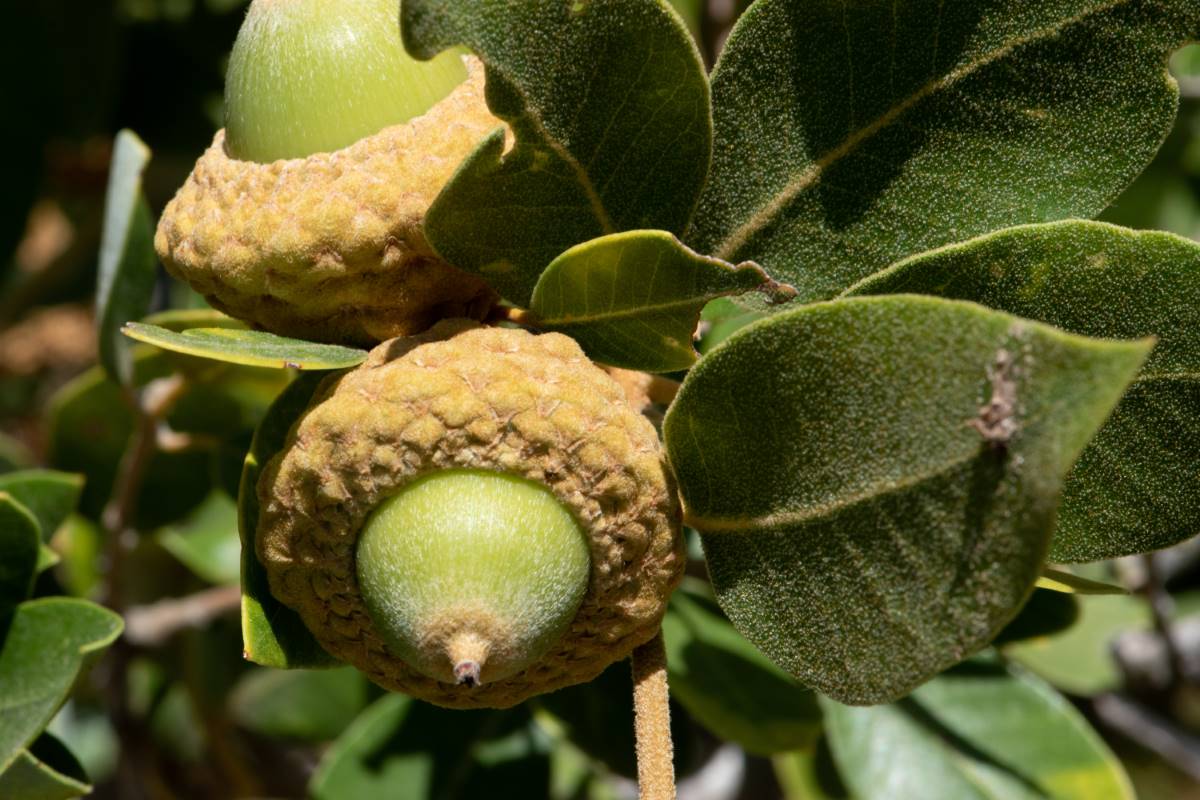Description
Quercus – Oak –
There are about 600 long lived, monoecious, deciduous, semi evergreen or evergreen trees to 120′ feet tall and shrubs to 3′ feet tall, in this genus. They are widely distributed in woodlands and scrub in the Northern Hemisphere. They are grown for their habit and foliage. They have usually fissured bark, downy to hairless shoots, and alternate, smooth edged, lobed, or toothed leaves, which in some deciduous species produces excellent red or yellow-brown autumn color. The tiny male and female flowers are produced separately on the same plant from mid spring to early summer, the males are borne in pendent yellowish-green catkins, the insignificant females singly, in pairs, or in racemes, followed by ovoid brown nuts (acorns) in scaly cups. The acorns are mostly ½-1 1/4″ long, sometimes more, and solitary or paired, but in some species are borne in racemes. Oaks can be divided into ‘White Oaks’ and ‘Red Oaks’, White Oaks have rounded leaf lobes and edible acorns that mature in one year. Red Oaks have pointed leaf lobes and acorns mature in two years and are too bitter to eat. Oaks are best as specimens in a large garden or park. Timber has long been prized.
Grow in deep, fertile, well drained soil in sun or partial shade, evergreen species prefer full sun. They tolerate alkaline soils unless stated otherwise.
Prone to borers, caterpillars (including gypsy moth larvae), leaf miner (including oak leaf miners, skeletonizers, scale insects, leaf rollers, wilt, anthranose, twig blight, cankers, powdery mildew, orange hobnail, leaf blister (curl or gall), rust, mushroom root rot, white heart rot, aphids, oak root fungus, and a variety of leaf spots.
Q. chrysolepis – Canyon Oak – Maul Oak – Canyon Live Oak – Goldencup Oak – This slow growing, spreading, evergreen tree or shrub from California and Oregon grows 70′ feet tall and 30′ feet wide. It has thick, scaly, whitish gray or red tinted bark. It produces oval or ovate, spiny toothed, leathery, shining, dark green leaves, to 4″ long, gray or yellow hairy beneath. It bears ovoid to oblong-ovoid acorns, 1-2″ long held in felted cups.
Zones 7-9





